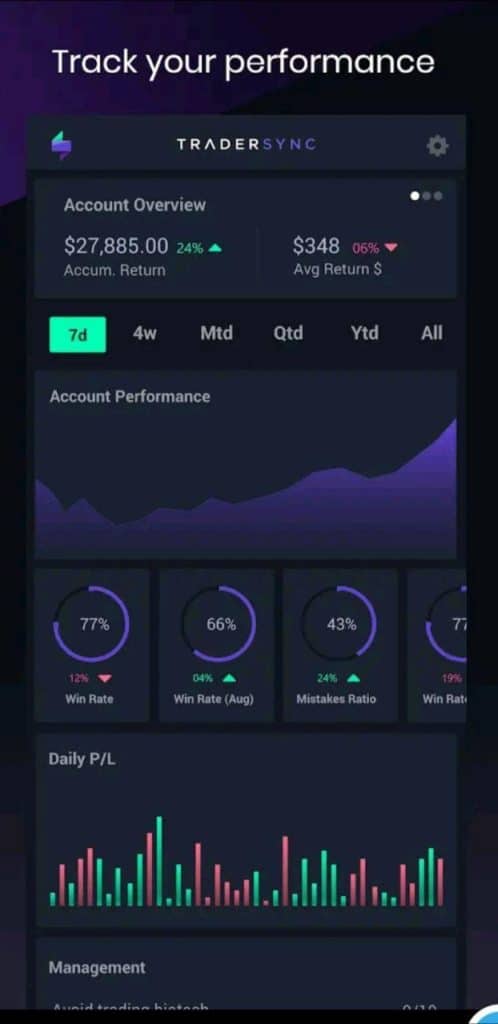Contents:


As an investor, it’s important to understand the various ways you can invest and the pros and cons of each investment opportunity. From penny stocks to growth stocks, there are several different types of stocks you can invest in. These stocks can fall into several classes, which are then grouped into either common stock or preferred stock. Large-cap stocks consist of the blue-chip, income, defensive, and cyclical stocks, since large companies have little potential for growth.
At some point, holders of preferred stock may allow the corporation to redeem the stock by a certain date for a specified price. This happens when the corporation can negotiate a more favorable dividend rate. The investment decisions you make very much depend on your personal financial situation and goals. Another way to classify stocks is based on the relative risk incurred when you purchase a particular stock. Investors and analysts do this by appealing to a stock’s P/E ratio (price-earnings ratio). The earnings are calculated using the earnings per share over the preceding four quarters.
Growth stocks are those with typically large market capitalizations. Market cap is defined as the price of the stock multiplied by the number of outstanding shares. These stocks experience higher-than-average earnings and sales growth. An undervalued stock is a stock that is selling at a price for less than what it’s worth. Since one way to make money in the stock market is to invest in stocks that will increase in value over time, an undervalued stock is a great find.
Blue-chip stocks are well-established companies that have a large market capitalization. They have a long successful track record of generating dependable earnings and leading within their industry or sector. Conservative investors may top-weight their portfolio with blue-chip stocks, particularly in periods of uncertainty. Several examples of blue-chip stocks include computing giant Microsoft Corporation , fast-food leader McDonald’s Corporation , and energy bellwether Exxon Mobil Corporation . As their name suggests, growth stocks refer to equities expected to grow at a faster rate compared to the broader market. Generally, growth stocks tend to outperform during times of economic expansion and when interest rates are low.
Types of stock
As early as 1288, the Swedish mining and forestry Different types of stocks company Stora has documented a stock transfer, in which the Bishop of Västerås acquired a 12.5% interest in the mine in exchange for an estate. Stocks can be broken down further into classes, typically Class A and Class B. Both have the same right to a company’s profits. HowTheMarketWorks.com® is a property of Stock-Trak, Inc., the leading provider of educational budgeting and stock market simulations for the K12, university, and corporate education markets. All information is provided on an “as-is” basis for informational purposes only, and is not intended for actual trading purposes or market advice. Quote data is delayed at least 15 minutes and is provided by XIGNITE and QuoteMedia. Neither Stock-Trak nor any of its independent data providers are liable for incomplete information, delays, or any actions taken in reliance on information contained herein.
Companies with the biggest market capitalizations are called large-cap stocks, with mid-cap and small-cap stocks representing successively smaller companies. Common stock represents partial ownership in a company, with shareholders getting the right to receive a proportional share of the value of any remaining assets if the company gets dissolved. Common stock gives shareholders theoretically unlimited upside potential, but they also risk losing everything if the company fails without having any assets left over. But when it comes to determining what stocks are right for you and your portfolio? It’ll depend on your individual investing strategy, your risk tolerance, and the resources you have available to you to invest — specifically, capital and time.
For example, a company may offer class A stock, class B stock, and so on. These different classes of stock play an important role in how the stock market works. If you’re considering investing in stocks, here’s what you need to know about all the different types of stocks and how they work.
How to Invest in Stocks: Investing in Stocks for Beginn…
Mutual Funds and ETFs – A Guide for Investors Read this PDF brochure to learn how mutual funds and ETFs work, what factors to consider before investing, and how to avoid common pitfalls. Funds pass along these costs to investors by charging fees and expenses. A fund with high costs must perform better than a low-cost fund to generate the same returns for you. Mutual fund shares are “redeemable,” meaning investors can sell the shares back to the fund at any time. A fund’s past performance is not as important as you might think because past performance does not predict future returns.
How to make money in stocks – USA TODAY Blueprint – USA TODAY
How to make money in stocks – USA TODAY Blueprint.
Posted: Tue, 21 Mar 2023 07:00:00 GMT [source]
The value of T-bills fluctuate and investors may receive more or less than their original investments if sold prior to maturity. T-bills are subject to price change and availability – yield is subject to change. Investments in T-bills involve a variety of risks, including credit risk, interest rate risk, and liquidity risk. As a general rule, the price of a T-bills moves inversely to changes in interest rates.
Types of stock classes
For instance, technology stocks have significantly outperformed in recent years, fueled by a robust economy and access to cheap funding. Investors can monitor growth stocks by following the themed exchange-traded fund , the SPDR Portfolio S&P 500 Growth ETF . You’ve probably heard that portfolio diversification is important for developing strong, stable investments.
Assessing the impact of the global subsea telecommunications … – Nature.com
Assessing the impact of the global subsea telecommunications ….
Posted: Wed, 12 Apr 2023 14:27:41 GMT [source]
They usually display more volatility and outperform other stocks in times of economic strength when consumers have more discretionary income. Examples of cyclical stocks include iPhone maker Apple Inc. and sports gear giant Nike, Inc. . Investors can add cyclical stocks to their portfolios by purchasing the Vanguard Consumer Discretionary ETF . For example, Alphabet Inc.—Google’s parent company—lists Alphabet Inc. , its Class A common stock, and Alphabet Inc. , its preferred Class C stock.
IPO stocks
Preferred stock is more of a way to collect income through dividends. “A preferred stock is kind of like a hybrid between a bond, which is a form of debt, and equity, which is a form of ownership,” says Zach Weiss, research analyst for FBB Capital Partners. Typically, shareholders of preferred stock will receive guaranteed fixed dividends. It’s important to consider your risk tolerance when it comes to investing in stocks.

https://forex-world.net/ogram accepts no responsibility whatsoever and reccomends that readers use this site for general education and then consult an investment professional before any purchase. It’s important to note that even though there may be a high dividend yield, that doesn’t always mean the company is doing well. These stocks are nice because they offer a consistent stream of money flowing in with lower risk involved. This means that, no matter the type of investment you make, there’s a level of uncertainty regarding how the investment may perform or how much money you might — or might not — earn from it. This means your investment may earn more than you expect in any one year, or you may lose some or all of the investment.
The product of this instantaneous price and the float at any one time is the market capitalization of the entity offering the equity at that point in time. Shares of companies in bankruptcy proceedings are usually listed by these quotation services after the stock is delisted from an exchange. The desire of stockholders to trade their shares has led to the establishment of stock exchanges, organizations which provide marketplaces for trading shares and other derivatives and financial products.
Common Income Stock
In the U.S., the two major stock exchanges are the New York Stock Exchange and the National Association of Securities Dealers Automated Quotations, also known as NASDAQ. The NASDAQ website allows you to keep an eye out for upcoming IPO stocks that you might want to invest in. Growth stocks are stocks that are projected to grow at a faster rate than average. In this next section, we’ll talk about some of the key components of each type of stock, as well as who each type of stock might be well-suited for.
- And keep in mind that blue chip stocks aren’t likely to experience meteoric growth.
- While these stocks provide the opportunity to invest with less capital, it’s important to consider the risks.
- Alternative Assets purchased on the Public platform are not held in an Open to the Public Investing brokerage account and are self-custodied by the purchaser.
- Target date funds, sometimes known as lifecycle funds, are designed for individuals with particular retirement dates in mind.
Advertising considerations may impact how and where products appear on this site but do not affect any editorial decisions, such as which products we write about and how we evaluate them. Personal Finance Insider researches a wide array of offers when making recommendations; however, we make no warranty that such information represents all available products or offers in the marketplace. Companies with low volatility and appreciation may have additional revenue that can be distributed to shareholders. These shareholders take on less risk in exchange for smaller, more frequent payments. As such, it’s important to understand how investing in stocks works before you take the plunge.
Foreign stocks are issued by companies that are based outside the United States. Some of these companies may have stocks that trade on U.S. stock exchanges to take advantage of the country’s robust capital markets, but their revenues and profits are still generated mostly elsewhere. Value stocks might be considered the less exciting cousin of growth stocks, but that doesn’t mean they’re any less rewarding for investors.
Because of their small size, small-cap stocks can sometimes be overlooked by fund managers, creating the potential to find hidden gems before the rest of the investment world. Preferred stock gives holders regular dividend payments before dividends are issued to common shareholders but doesn’t provide voting rights. Common stock, as you might guess, is the most common type of stock companies issue. It has the potential to increase in value through company growth and profits and may pay out dividends to shareholders.
- Another theory of share price determination comes from the field of Behavioral Finance.
- Forbes Advisor adheres to strict editorial integrity standards.
- Asset classes perform differently, and it’s nearly impossible to predict which asset class will perform best in a given year.
- However, bondholders are typically reimbursed before preferred stockholders.
- The net worth of such companies can exceed the economic conditions and capacity of some small countries.
Common stock gives you an ownership stake in the business with the ability to vote on key matters such as electing the board of directors or adopting certain company policies. Convertible preferred stock is a hybrid security that gives holders the option to convert their preferred stock into common shares after a defined date. Income stocks provide regular income by distributing a company’s profits, or excess cash, through dividends that are higher than the market average.
What Are The Different Types Of Stock To Invest In? – Bankrate.com
What Are The Different Types Of Stock To Invest In?.
Posted: Thu, 09 Mar 2023 08:00:00 GMT [source]
Mid-cap stocks can offer the potential for growth as they expand their share of the markets where they do business. Plus, they’re often the target of mergers or acquisitions by large-cap companies. Companies with a market capitalization between $2 billion and $10 billion are called mid-cap stocks.